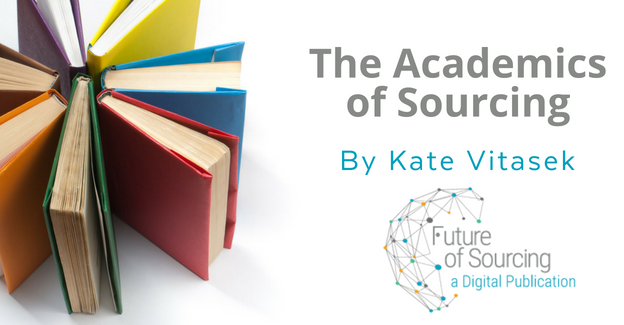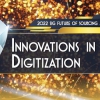“The Academics of Sourcing” is a series that regularly shares some of the best academic insights and translates the learnings from academia into sound advice for practitioners.
Mary Lacity’s and Leslie Willcocks’ joint research in progressive outsourcing approaches has helped companies navigating modern outsourcing for over two decades.
Lacity, Curators’ Distinguished Professor at the University of Missouri-St. Louis and a Visiting Scholar at MIT CISR, and Willcocks, Professor in Technology Work and Globalization at the Department of Management at London School of Economics and Political Science, have teamed to co-author more than 150 articles and 30 books on outsourcing since their first collaboration in 1994. And that doesn’t count the work they have done separately!
The duo mainly focuses on Information Technology Outsourcing (ITO) and Business Process Outsourcing (BPO). BPO is highly IT-enabled, and on a growth trajectory that “impacts across functions of major, medium and small enterprises, including procurement, human resources, accounting and finance, sales, marketing, legal, asset management and key administrative processes,” they note in their 2015 book, Nine Keys to World-Class Business Process Outsourcing.
Lacity and Willcocks have tracked the rapid growth of ITO and BPO over the years, as well reported on and studied best practices and trends. Undeniably, the biggest trend is the growth rate of outsourcing in both of these sectors. The scholars report BPO generated more than $320 billion worldwide by the end of 2016 and the ITO market was an estimated $657 billion during the same time frame.
While the growth rate is interesting, it is their research into best practices and next practices that excites me.
Best Practices in Outsourcing
One of my favorite research topics they tackled resulted in Nine Keys to World-Class Business Process Outsourcing. As part of the research, they surveyed 263 BPO clients and interviewed 65 client-providers. The work identified nine practices associated with best-in-class BPO performance:
- Assign great leadership pairs
- Focus on business and strategic benefits beyond cost efficiencies
- Adopt a partnering approach to governance
- Align the retained organization, outsourced processes and provider staff
- Drive strong transition, transformational and change management capabilities
- Deploy domain expertise and business analytics
- Resolve issues together and conflicts fairly
- Prioritize and incentivize innovation
- Use technology as an enabler and accelerator of performance
The overriding themes and key words from these nine practices that I discern are collaboration, alignment and flexible governance frameworks that focus on communication and innovation. Their findings align nicely with the work we are doing at the University of Tennessee on Vested Outsourcing. For example, their finding on “assign great leadership pairs” directly support our teaching on using “two in a box” relationship management practices in strategic outsourcing deals.
The book describes in detail the practices that characterize the top global BPO performers, including BP, EMC, TalkTalk and Microsoft.
From Best Practices to Next Practices
One of the things I admire about Lacity and Willcocks is their never-ending quest to research the “next” practice in outsourcing. More recently, Lacity and Willcocks have tackled the topic of robotic process automation (RPA) in a book published last year, Robotic Process Automation and Risk Mitigation: The Definitive Guide.
Based on a two-year study, it is the first comprehensive analysis that examines RPA risks as experienced and dealt with by organizations. As more organizations adopt RPA, Lacity and Willcocks find that best practice companies are able to gain a “triple win” from RPA: a win for shareholders, a win for customers and a win for employees. “But while such results are impressive, they are far from guaranteed. Service automation, like all organizational initiatives, is fraught with risks that need to be mitigated.” Their RPA risk mitigation framework describes the significant RPA risks and identifies 30 key risk mitigation practices that the research found to be successful.
Some of the risks include: lack of bot standardization; possibility that bots make innovation more difficult and slower; possibility that success and security are jeopardized if deployment is done too quickly; little to no incentive for business-process owners to automate themselves or their staffs out of jobs; and likelihood that bots don’t eliminate the need for rethinking core platforms.
One risk not mentioned - but that is on my radar screen - is the inherent perverse incentive for outsourced service providers to bring RPA ideas to clients when they are working under a transactional “per head count” or “per transaction” basis. Think about it. Why would a supplier want to automate and reduce headcount on transactions if they are being paid on a per-head count basis? I think this is one reason we are seeing more and more IT and BPO suppliers taking interest in the win-win nature of a Vested sourcing business model. Simply put, suppliers become highly motivated through incentives to increase their investment and use of RPA that benefits the clients – and the supplier.
Even with the risks, Lacity and Willcocks are bullish on the future of RPA, stating the business case is “a strong one,” including the fact that it is “relatively easy and cheap to implement, lightweight IT (though falling within IT governance, security and policy requirements); cost and FTE savings, but also multiple other benefits; scales easily, easily redeployed.”
So what is next for the pair? What is their newest topic of interest? Blockchain.
Lacity made it clear it’s time to take bots seriously as part of the outsource toolkit. If you weren’t already on top of RPA, you now need to double down and start thinking about Blockchain.
Kudo’s to Willcocks and Lacity for their excellent work in helping the outsourcing profession grow and expand.







